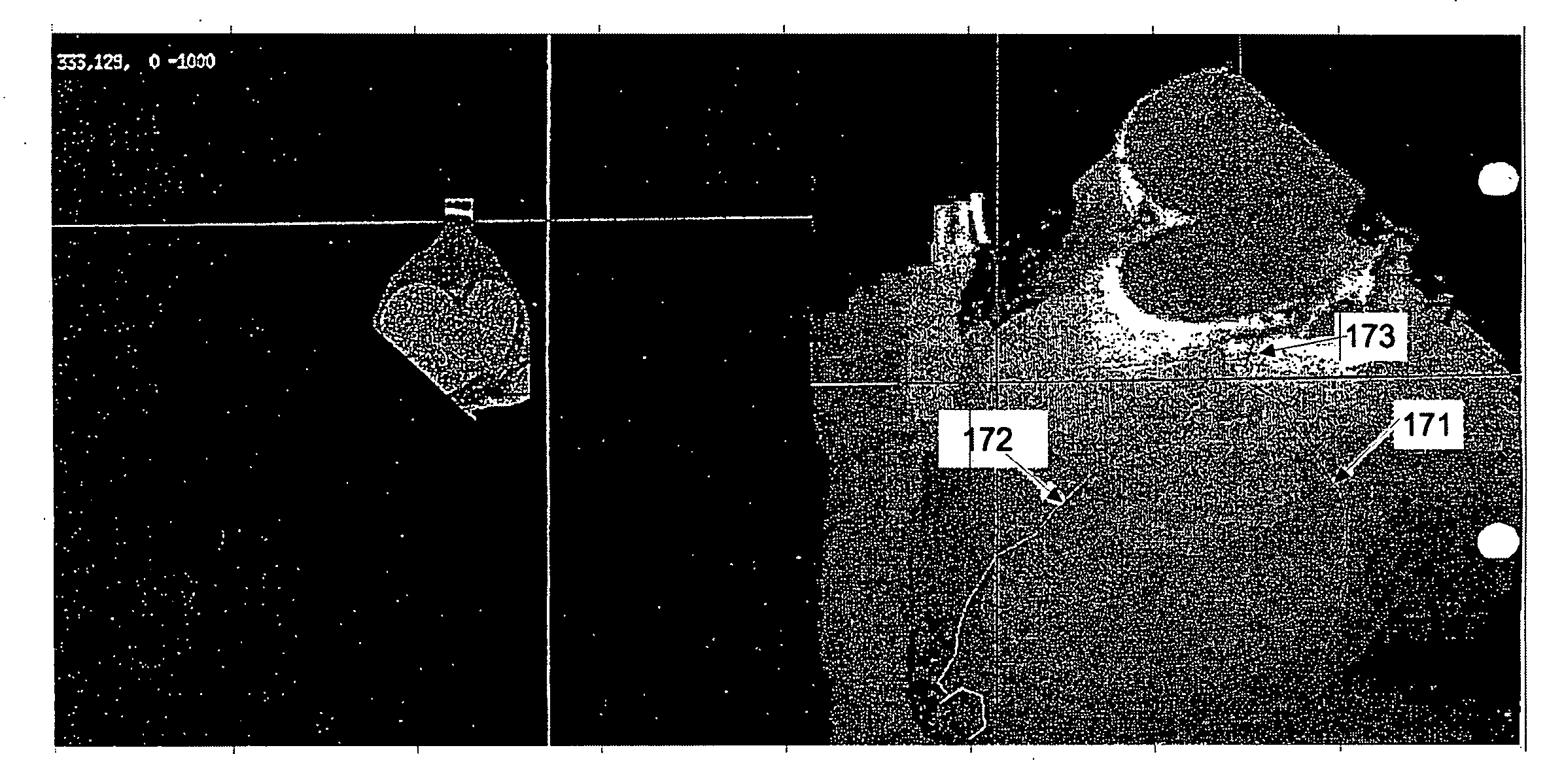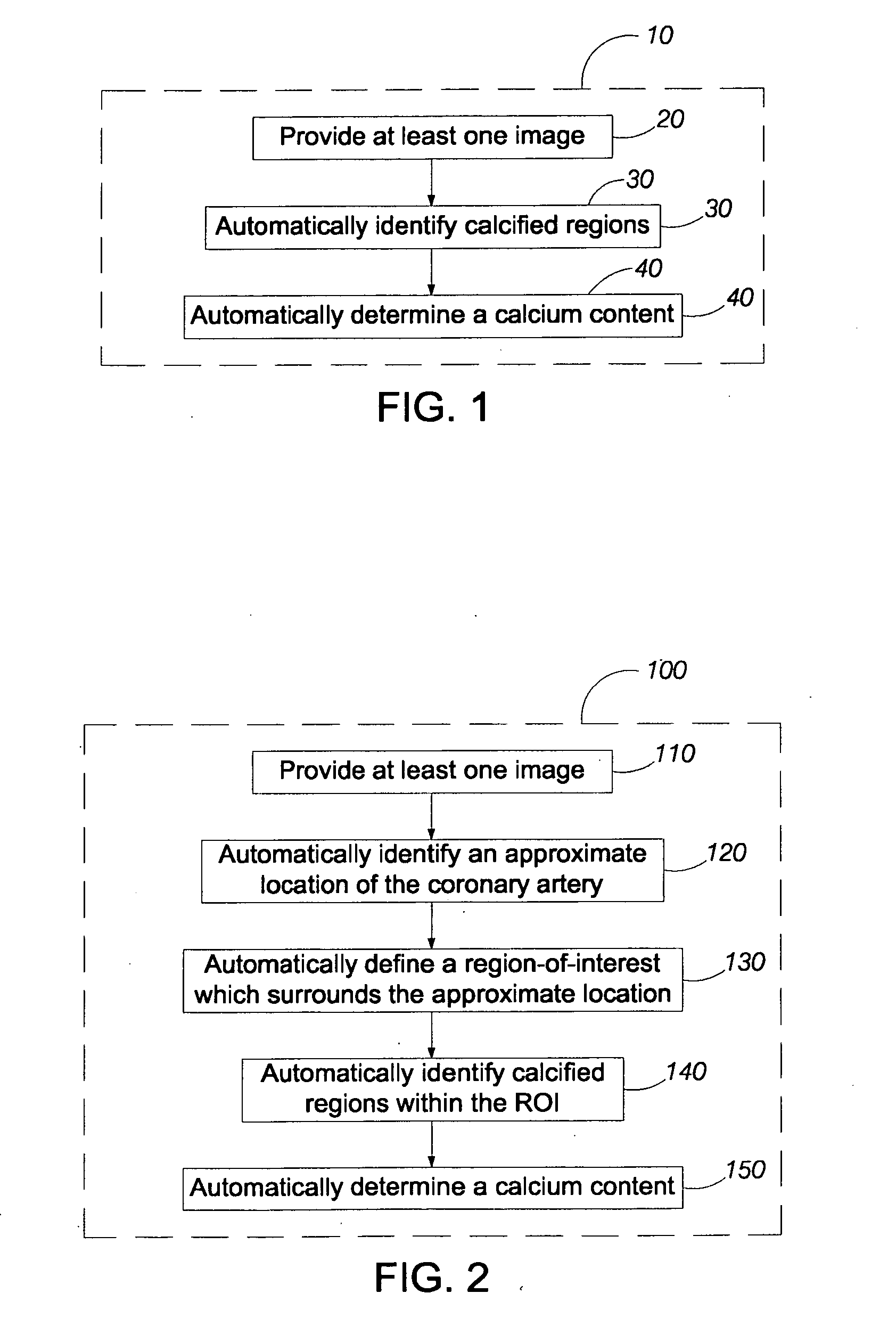Automatic Segmentation of the Heart and Aorta in Medical 3-D Scans Without Contrast Media Injections
a technology of computed tomography and heart and aorta, which is applied in the field of medical imaging using computed tomography, can solve the problems of inability to perform stress tests, limited noninvasive methods of detection, and added, although manageable, complexity, etc., and achieves improved reproducibility of measurements, improved precision, and reduced number of interactions between the operator and the image.
- Summary
- Abstract
- Description
- Claims
- Application Information
AI Technical Summary
Benefits of technology
Problems solved by technology
Method used
Image
Examples
Embodiment Construction
[0049]A premise of certain embodiments described herein is that the atherosclerotic process is systemic, affecting all of the arteries of the body in a similar way. Although plaque build-up may occur and / or progress at different rates in different arteries, this process occurs throughout the body. Others have studied the close relationship of cardiac calcium and extracoronary plaque by comparing ultrasound measurements of carotid, aortic, and femoral plaque with ultrafast CT measurements of coronary calcifications. These studies have shown that patients with coronary calcifications had a higher prevalence of aortic and femoral plaque.
[0050]The abdominal aorta is a site of atherosclerotic plaque containing calcifications. The aorta has minimal motion, thus allowing easy imaging using conventional CT scanners. Although aortic calcifications have been associated subjectively with atherosclerotic disease, aortic calcium has not been quantified or proposed as a quantitative diagnostic te...
PUM
 Login to View More
Login to View More Abstract
Description
Claims
Application Information
 Login to View More
Login to View More - R&D
- Intellectual Property
- Life Sciences
- Materials
- Tech Scout
- Unparalleled Data Quality
- Higher Quality Content
- 60% Fewer Hallucinations
Browse by: Latest US Patents, China's latest patents, Technical Efficacy Thesaurus, Application Domain, Technology Topic, Popular Technical Reports.
© 2025 PatSnap. All rights reserved.Legal|Privacy policy|Modern Slavery Act Transparency Statement|Sitemap|About US| Contact US: help@patsnap.com



